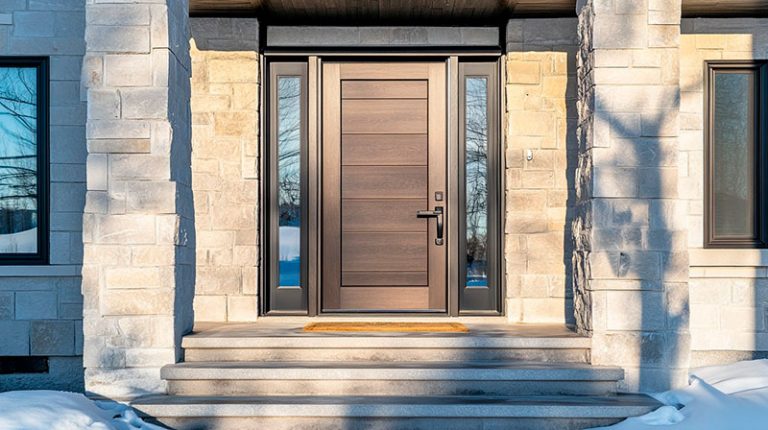Moisture trapped between window panes is a frustrating problem that affects many Ontario homeowners, particularly during our harsh winters. This condensation occurs when the seal in your insulated glass unit fails, allowing humid air to enter the space between the two panes. While a hair dryer can temporarily clear the fogging, this method only provides a short-term fix—the real solution requires professional window repair or replacement to restore your window’s energy efficiency and clear view.
Window Replacement Near Me
Why Moisture Forms Between Glass Panes?
When condensation appears between double pane windows, it signals that your window’s seal has failed. Modern windows feature an insulated glass unit with a spacer that maintains the gap between glass panes, often filled with argon gas for better insulation. When this seal breaks down due to age, weather elements, or thermal expansion, moist air enters the space where it shouldn’t be.
The problem becomes particularly noticeable during cold temperatures when warm interior air meets the cold glass surface. Water droplets form as the air cools, creating those annoying foggy windows that obstruct your view and indicate reduced energy efficiency.
Find related services
Best Window Types for Airflow in Ontario Homes
Different window styles offer varying ventilation capabilities, and choosing the right combination can dramatically improve your home’s air circulation.
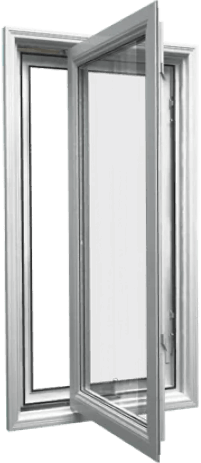
Casement Windows: The Ventilation Champions
Casement windows excel at capturing and directing outdoor air into your home. These side hinged windows can open fully to catch prevailing winds from multiple angles, making them particularly effective for cross-ventilation strategies. Their design allows for maximum opening area compared to sliding alternatives.

Awning Windows for Controlled Fresh Air
Awning windows feature top hinged operation that creates excellent ventilation even during light rain. These windows work brilliantly in bathrooms and bedrooms where you need consistent airflow whilst maintaining privacy and weather protection.
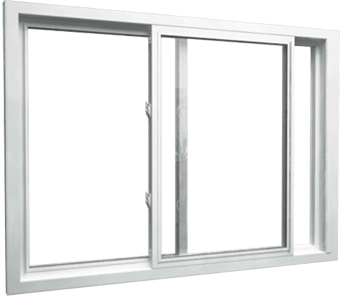
Strategic Use of Sliding Windows
Sliding windows offer reliable ventilation with easy operation, though they typically provide 50% maximum opening compared to casement styles. They work well in areas where space limitations prevent outward-opening windows.
| Window Type | Ventilation Efficiency | Best Location | Weather Protection |
| Casement | Excellent (100% opening) | Living rooms, bedrooms | Good |
| Awning | Very Good | Bathrooms, basements | Excellent |
| Sliding | Good (50% opening) | Tight spaces | Fair |
Find related products
Effective Cross-Ventilation Patterns
Cross-ventilation occurs when fresh air enters through windows on one side of your home and exits through openings on the opposite side, creating continuous airflow throughout your space. This natural cooling effect can reduce indoor temperatures by several degrees without using energy-intensive mechanical systems.
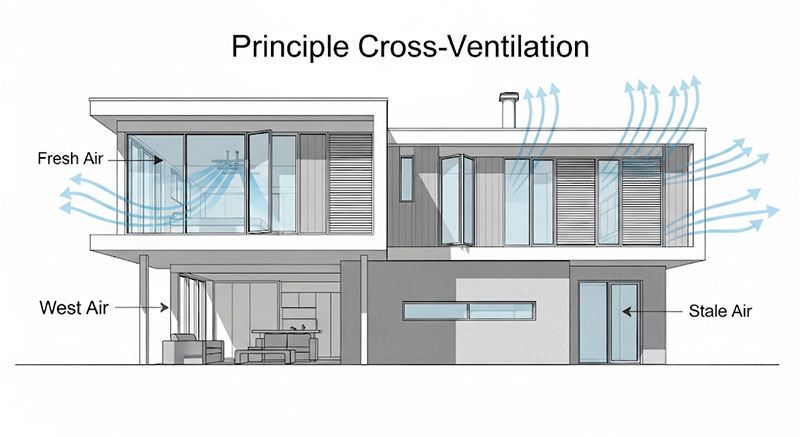
Position intake windows on the windward side of your home and exhaust windows on the leeward side. In Ontario, prevailing winds typically come from the southwest during summer months, making south and west-facing windows ideal for air intake.
Stack Ventilation for Multi-Storey Homes
Stack ventilation uses the chimney effect to move air vertically through your home. Warm air naturally rises and exits through upper-level windows whilst cool air enters through lower openings. This creates powerful natural airflow that works particularly well in homes with tall windows or multiple storeys.
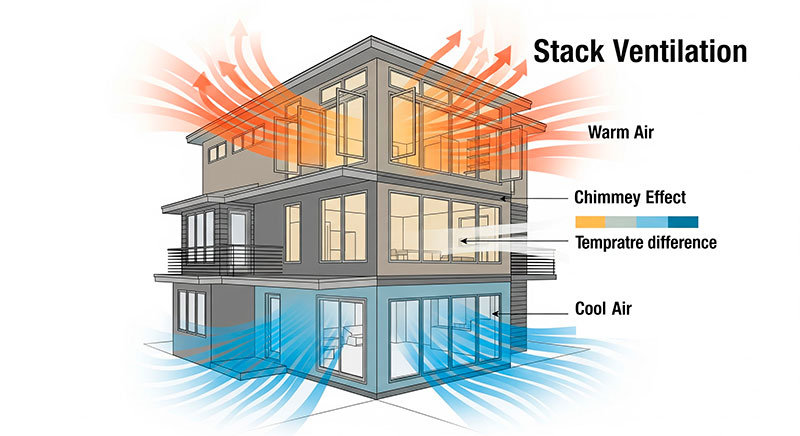
Installing operable windows at different heights maximises this effect. For example, basement windows can supply cool outdoor air whilst upper-level windows exhaust warm indoor air, creating continuous circulation without requiring fans or mechanical ventilation systems.
"We regularly see homeowners amazed by how much their indoor comfort improves when they implement proper cross-ventilation strategies. It's like getting free air conditioning from Mother Nature." - Cherry Jian, Sales Consultant
Energy Efficiency Benefits of Natural Window Ventilation
Natural ventilation can reduce your home’s energy consumption significantly during Ontario’s spring and autumn months when outdoor temperatures align with indoor comfort preferences. By allowing fresh air to cool your home naturally, you can delay turning on air conditioning and reduce overall energy costs.
During winter months, controlled ventilation through energy efficient windows helps manage indoor humidity levels whilst minimising heat loss. Modern energy efficient windows feature advanced weatherstripping and multiple sealing points that allow for precise control over airflow.
Reducing HVAC System Workload
Strategic window ventilation can reduce strain on your heating and cooling systems by:
- Pre-cooling indoor spaces during evening hours
- Purging stale air without mechanical assistance
- Maintaining optimal humidity levels naturally
- Providing fresh air supply for better indoor air quality
The key lies in understanding when to use natural ventilation versus mechanical systems. During moderate weather, windows can handle most of your ventilation needs whilst extreme temperatures require backup from your HVAC system.
Maintenance Tips for Optimal Window Performance
Regular maintenance ensures your windows continue providing excellent ventilation throughout their lifespan. Clean window tracks and hinges seasonally to maintain smooth operation, particularly important for casement and awning styles that rely on mechanical hardware.
Essential Maintenance Tasks:
- Lubricate hinges and locks annually
- Clean and adjust weatherstripping
- Check and tighten hardware connections
- Operate windows regularly to prevent binding
- Inspect screens for damage that might restrict airflow
Weather stripping replacement becomes crucial for maintaining both ventilation control and energy efficiency. Damaged seals allow uncontrolled air infiltration that can compromise your heating and cooling systems whilst reducing your ability to precisely manage indoor airflow.
"Proper window maintenance isn't just about keeping them looking good – it's about ensuring they function as intended for ventilation and energy efficiency. Small issues can quickly become major problems if ignored." - Alexandr Naumov, Project Manager
Seasonal Ventilation Strategies for Ontario's Climate
Ontario’s varied climate requires adaptive ventilation strategies that change with the seasons whilst maintaining comfortable indoor conditions year-round.
Spring and Summer Approaches
During warmer months, maximise natural cooling by opening windows during cooler evening and morning hours whilst closing them during peak heat periods. This strategy, called night-flush cooling, can reduce indoor temperatures significantly without air conditioning.
Create airflow patterns that draw cool outdoor air through living spaces and exhaust warm air from upper levels. Combine this with ceiling fans to enhance air movement and create cooling effects even when outdoor temperatures are moderate.
Winter Ventilation Considerations
Cold weather doesn’t eliminate the need for fresh air circulation. Instead, it requires more controlled approaches that maintain indoor air quality whilst conserving energy. Brief, strategic ventilation periods can refresh indoor air without significant heat loss.
Use bathroom and kitchen exhaust fans in conjunction with slightly opened windows to prevent negative pressure that can affect heating efficiency. This balanced approach maintains indoor air quality whilst supporting your heating system’s performance.
Transition Season Opportunities
Spring and autumn offer the best opportunities for extensive natural ventilation. Outdoor temperatures often align perfectly with indoor comfort preferences, allowing you to rely almost entirely on window ventilation for climate control.
| Season | Ventilation Strategy | Key Considerations |
| Spring | Purge stale winter air | Pollen filtration |
| Summer | Night-flush cooling | Heat gain prevention |
| Autumn | Harvest cool air | Humidity control |
| Winter | Controlled fresh air | Heat conservation |
Combining Windows with Other Ventilation Elements
Window ventilation works best when integrated with other home ventilation components. Skylights can enhance stack ventilation effects whilst exhaust fans provide targeted moisture removal in specific areas.
Consider how your window ventilation strategy interacts with:
- Central HVAC systems and their air filtration
- Kitchen and bathroom exhaust fans
- Whole-house ventilation systems
- Air purification equipment
The goal is creating a comprehensive approach where each element supports the others rather than working independently. This integrated strategy maximises both indoor air quality and energy efficiency whilst reducing maintenance requirements across all systems.
Modern windows and doors from Total Home Windows and Doors incorporate advanced ventilation features that work seamlessly with contemporary home systems. Our engineering background helps us design solutions that optimise both individual room comfort and whole-house performance.
Frequently Asked Questions About Window Ventilation
How to ventilate a room without windows?
Install wall vents or mechanical exhaust fans to create airflow in windowless spaces. These systems draw stale air out whilst pulling fresh air through adjoining rooms, ensuring adequate ventilation where natural openings aren’t possible in buildings.
Can you add window vents to existing windows?
Yes, retrofit vents can be installed in existing window frames to maximize airflow without replacing entire units. These additions suit most window styles and provide controlled ventilation whilst maintaining the structural integrity of your current windows.
What is window ventilation?
Window ventilation uses strategically positioned openings to create natural airflow that replaces stale indoor air with fresh outdoor air. This process plays a crucial role in maintaining healthy indoor environments without relying on mechanical power systems.
Should you open window vents in winter?
Limited winter ventilation prevents moisture buildup and maintains air quality whilst conserving energy. Brief periods of controlled airflow help buildings maintain healthy conditions without significant heat loss, making this approach both practical and sustainable.
What type of window is best for natural ventilation?
Casement windows provide superior ventilation because they open completely to capture more air from multiple directions. Their design allows maximum airflow control compared to sliding styles, making them ideal for rooms requiring excellent natural ventilation.
Are windows natural ventilation?
Windows serve as natural ventilation components when strategically positioned to filter and direct outdoor air through interior spaces. They work without mechanical power to remove dust, control humidity, and maintain comfortable indoor conditions in residential buildings.




